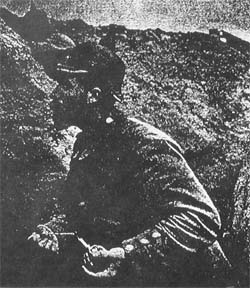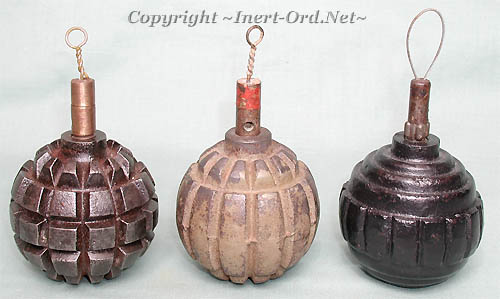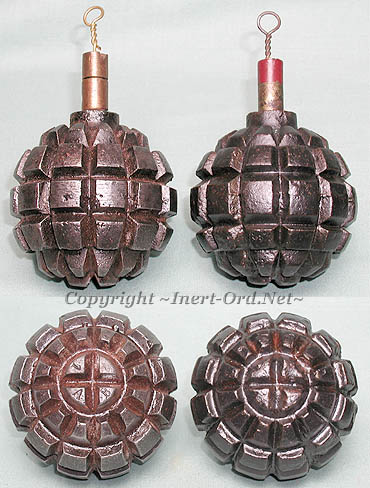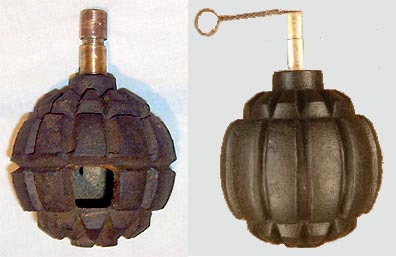
During the 1904 Russo-Japanese War there was massive and effective use of grenades in the defense of entrenched camps. Noted by both the French and Germans, they reintroduced the hand grenade in quantity to their infantry's inventory of armaments at the outbreak of WWI. Still, grenades were of little tactical value in open combat involving movement of massed infantry. However, by the end of 1914 when the face of the battlefield changed to siege warfare from the trenches, the hand grenade became (and remains) an indispensable weapon for close combat where direct observation or contact with the enemy is not possible.
The Kugelhandgranate is made of cast iron with large external segments. It held an explosive charge of 70% black powder reinforced with baryta nitrate and potassium perchlorate. Fragments could pierce two centimeters of pine board at ten meters.
The 1 kilo (2.2lbs) "Kugel" could be thrown about 15 meters, or using a catapult, out to 300m .
It was transported loaded and closed with a zinc alloy plug.



